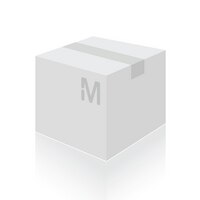CBA005 Sigma-AldrichPhosphoDetect™ Akt (pSer⁴⁷³) ELISA Kit
Sinónimos: Protein Kinase B, Phospho-Specific (Ser⁴⁷³) ELISA Kit
Productos recomendados
Descripción
| Replacement Information |
|---|
Tabla espec. clave
| Detection Methods |
|---|
| Colorimetric |
| Applications |
|---|
| Biological Information | |
|---|---|
| Assay range | 1.6-100 units/ml |
| Assay time | 4 h |
| Sample Type | Cell lysates |
| Physicochemical Information | |
|---|---|
| Sensitivity | ≤0.8 units/ml |
| Dimensions |
|---|
| Materials Information |
|---|
| Toxicological Information |
|---|
| Safety Information according to GHS |
|---|
| Packaging Information |
|---|
| Transport Information |
|---|
| Specifications |
|---|
| Global Trade Item Number | |
|---|---|
| Número de referencia | GTIN |
| CBA005 | 0 |
Documentation
PhosphoDetect™ Akt (pSer⁴⁷³) ELISA Kit Certificados de análisis
| Cargo | Número de lote |
|---|---|
| CBA005 |
Referencias bibliográficas
| Visión general referencias |
|---|
| Kops, G.J., et al. 2002. Mol. Cell Biol. 22, 2025. Stiles, B., et al. 2002. Mol. Cell Biol. 22, 3842. Sun, M., et al. 2001. Am. J. Pathol. 159, 431. Fulton, D., et al. 1999. Nature 399, 597. Datta, S.R., et al. 1997. Cell 91, 231. Alessi, D.R., et al. 1996. EMBO J. 15, 6541. Bellacosa, A., et al. 1995. Int. J. Cancer 64, 280. Burgering, B.M. and Coffer, P.J. 1995. Nature 376, 599. Franke, T.F., et al. 1995. Cell 81, 727. Bellacosa, A., et al. 1993. Oncogene 8, 745. Staal, S.P. 1987. Proc. Natl. Acad. Sci. USA 84, 5034. Coffer, P.J. and Woodgett, J.R. 1991. Eur. J. Biochem. 201, 475. Jones, P.F., et al. 1991. Proc. Natl. Acad. Sci. USA 88, 4171. |
Folleto
| Cargo |
|---|
| Akt |
| Biologics 31.1 |
| Diabetes and Obesity |
| Kit SourceBook - 2nd Edition EURO |
| Kits SourceBook - 2nd Edition GBP |
| Protein Kinase Assay and Detection Kits Brochure |



















